Easy homemade tamarind paste | Learn how to make tamarind paste | best way to make homemade tamarind concentrate | homemade tamarind paste | pressure cooker tamarind paste | quick tamarind concentrate using pressure cooker | puli gojju | tamarind pulp with step-by-step pictures and video recipe. Check out the how-to-make tamarind paste and If you like the video pls SUBSCRIBE to my channel
Easy homemade tamarind paste | Learn how to make tamarind paste | the best way to make homemade tamarind concentrate | homemade tamarind paste | pressure cooker tamarind paste | quick tamarind concentrate using the pressure cooker. When it comes to south Indian cooking tamarind is one essential ingredient. Be it Rasam recipe varieties or Kuzhambu with tamarind or some Thogayal recipe varieties, pulikaichal, etc. tamarind is one must in our home. Tamarind paste is also popular in Thai recipes and some non-Indian recipes. Homemade tamarind concentrate is super simple. Without preservatives is the best part of making tamarind paste at home
Tamarind - essential south Indian cooking ingredient
The tamarind tree produces pod-like fruit the fresh pulp inside the pod is what we use for cooking. During my childhood days, my aunt gets bulk old tamarind from people who had trees. My mother and aunt do the process of deseeding and every year Amma brings a bulk amount of tamarind which stays good for a long time. I have heard it is found in tropical countries and subtropical countries but recently I was surprised to know it is native to tropical Africa.
What are tamarind pods?
Originally tamarind is taken from the pods. We generally remove the shell in the pods then deseed and use the flesh. I don't get tamarind pods here in the US. I generally buy tamarind blocks.
What are tamarind blocks?
I generally buy tamarind blocks from Indian grocery stores. It is also widely available in the Asian aisle in other supermarkets. We get two varieties of tamarind blocks hard one and a soft one. I generally buy seedless hard tamarind block, though it is seedless it will have traces of seeds and some hard membranes, fibers, etc.
Tamarind extract/juice/ water for cooking?
I would have mentioned gooseberry-sized tamarind, lemon sized tamarind in many of my recipes. Typically we extract tamarind water and use it for everyday south Indian recipes/cooking.
Tamarind extracted with tamarind and water is also called tamarind pulp, tamarind water, tamarind juice, puli thanni, puli karaichal, etc.
What are the easy ways to soften tamarind?
Traditionally my mother use to soak tamarind in hot water for a few minutes and she extracts the juice, I follow that technique. Alternatively, we can also boil tamarind in hot water to speed up the process. Microwaving the tamarind for a few minutes also speeds up the process.
How is the tamarind paste useful?
I generally prepare tamarind extract by soaking tamarind in water but when I forgot to soak the tamarind or run late for a quick-cooking that’s when tamarind paste comes super handy. Tamarind concentrate is also useful when you need a very small portion of tamarind extract for recipes like thogayal.
Why not store-bought tamarind paste?
Honestly, I use to buy the store-brought tamarind paste until recent years. Once when I read the label the preservatives and fructose syrup alarmed me. That's when I realized preservative-free homemade tamarind paste is any day best. Also, it is super easy to make.
Is homemade tamarind paste time-consuming?
It just takes around 20 minutes of time. We need to cook, and cool down. Squeeze, strain, and Repeat. The tamarind I used had a hard membrane and fiber. If you use the soft seedless ones you might even find which are super fast. You can directly grind the cooked tamarind with extra water.
How long can I store tamarind paste?
Tamarind paste done in this way stays good for months (5 - 6 months). For the quantity I make it won't last long in my home so I don't know the actual shelf life of this tamarind paste. I have never tried freezing tamarind paste so not sure how freezing works. I make a small batch and store it in the fridge.
How much tamarind paste should I use for my cooking?
The quantity totally depends on the dish. Also, it depends on the type of puli /tamarind you used. A paste made with old tamarind tastes sour compared to new tamarind paste.
Is cooking puli concentrate twice necessary?
For longer shelf life it is better to cook the concentrate. If you are planning to use the puli gojju(concentrate) within a few days you can skip boiling the concentrate. Puli aval Instant puli sadam pulikaichal Kuzhambu with tamarind Thogayal recipe varieties 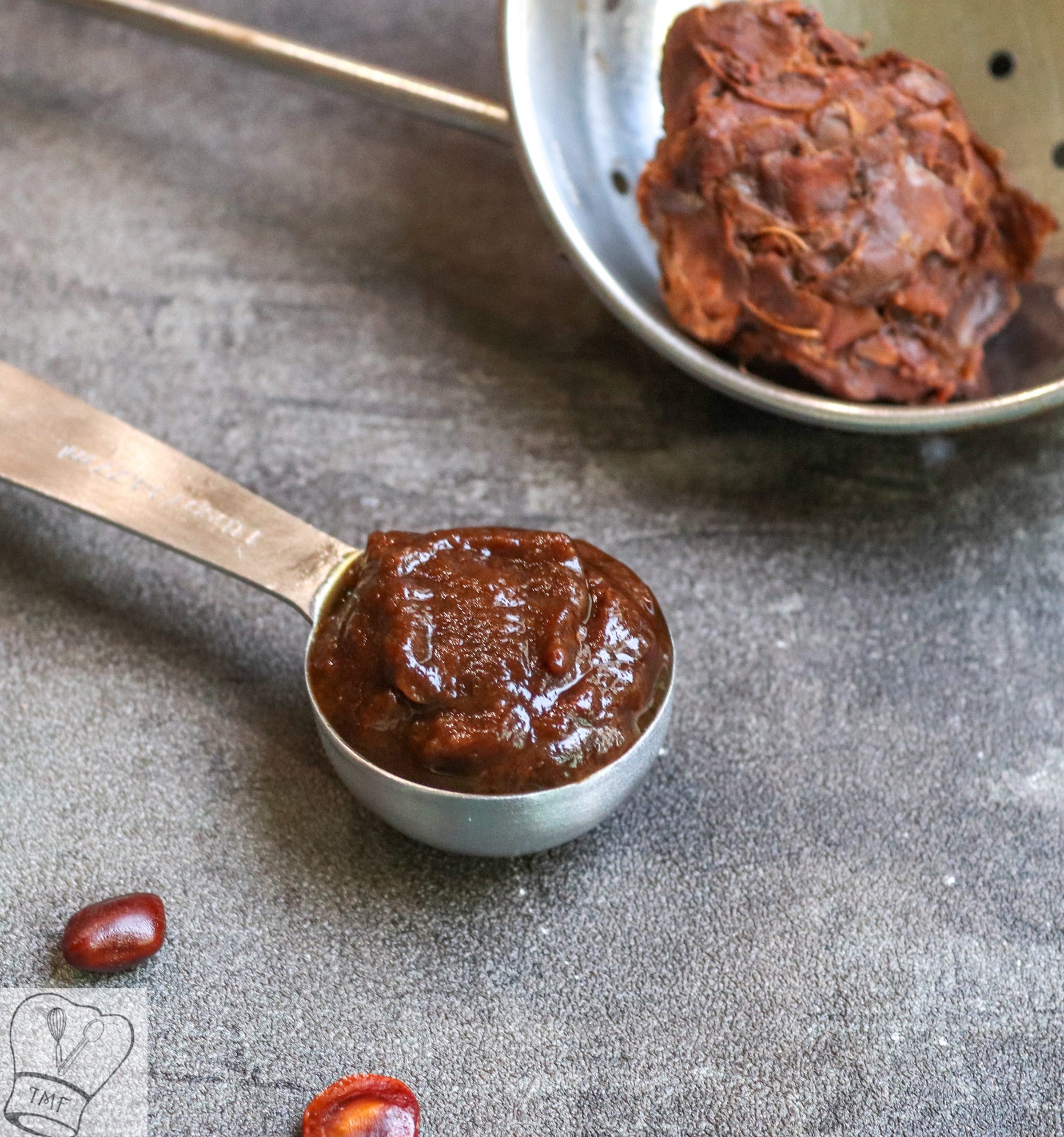
Other rasam recipes in TMF
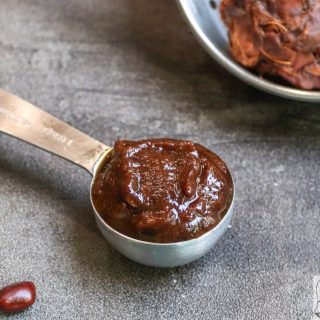
Ingredients
- Tamarind blocks - 100 grams
- Water - 2 cups
Instructions
- Break the tamarind block into small chunks. If there are any seeds discard them
- Place these tamarind chunks/pieces into a cooker separator add 1 cup of water
- Close the separator with a lid
- Add water to the cooker and place the separator. Pressure cook for 3 whistles and switch off
- Let the pressure release the naturally and tamarind mixture cools completely
- If the tamarind you used is soft without hard membranes, seeds, fibers, etc. blend the cool tamarind + 1 cup of water in a hand mixer or mixie
- On the contrary for tamarind with the hard membrane, fiber, etc. and mash the cooked tamarind thoroughly with hands/ potato masher
- Use strainer/colander/ tamarind extractor/ mesh strainer to strain the tamarind
- Strain the cooked tamarind and collect the thick tamarind extract in a container
- Add 1/2 cup of warm water to the remaining tamarind extract
- Squeeze and then extract the tamarind concentrate and collect in the same container
- Add 1/2 more of water to the tamarind extract
- Squeeze and extract well
- Thick tamarind pulp is ready
- Now add the thick tamarind pulp in the heavy-bottomed pan
- Cook for 10 minutes or till it thickens and turn into a thick tamarind concentrate (puli gojju)
- Turn off the stove and cool down completely
- Store in an airtight container and refrigerate
- What to do with the remaining tamarind?
- Add 1/2 to 3/4 cup of water and extract the juice; use it for Rasam recipes. Tamarind residue can be used to clean pooja items.
Video
Notes
- If you are doing in instant pot cook in high pressure for 20 minutes and natural pressure release
- Thin tamarind extract can be used for cooking and discarded tamarind solids can be used to clean brass and bronze
Reduce the cooking time for soft tamarind. 3 whistles and 17 minutes for instant pot - Second time Cooking tamarind concentrate helps for longer shelf life. If you are keeping for a month you can skip it
- Make sure to immerse the tamarind fully in the water
- If you are making tamarind concentrate in large quantity it is better to Work in batches.
- If puli paste is not thick it might not stay longer
Ingredients:
Tamarind blocks - 100 grams Water - 2 cups
How to make homemade tamarind paste with step-by-step pictures:
- Break the tamarind block into small chunks. If there are any seeds discard them
- Place these tamarind chunks/pieces into a cooker separator and add 1 cup of water
- Close the separator with a lid
- Add water to the cooker and place the separator. Pressure cook for 3 whistles and switch off
- Let the pressure release and the tamarind mixture cools completely
- If the tamarind you used is soft without hard membranes, seeds, fibers, etc. blend the cool tamarind + 1 cup of water in a hand mixer or mixie
- On the contrary for tamarind with the hard membrane, fiber, etc. and mash the cooked tamarind thoroughly with hands/ potato masher
- Use strainer/colander/ tamarind extractor/ mesh strainer to strain the tamarind
- Strain the cooked tamarind and collect the thick tamarind extract in a container
- Add 1/2 cup of warm water to the remaining tamarind extract
- Squeeze and then extract the tamarind concentrate and collect in the same container
- Add 1/2 more water to the tamarind extract
- Squeeze and extract well
- Thick tamarind pulp is ready
- Now add the thick tamarind pulp to the heavy-bottomed pan
- Cook for 10 minutes or till it thickens and turns into a thick tamarind concentrate (puli gojju)
- Turn off the stove and cool down completely
- Store in an airtight container and refrigerate
What to do with the remaining tamarind?
Add 1/2 to 3/4 cup of water and extract the juice; use it for Rasam recipes. Tamarind residue can be used to clean pooja items.



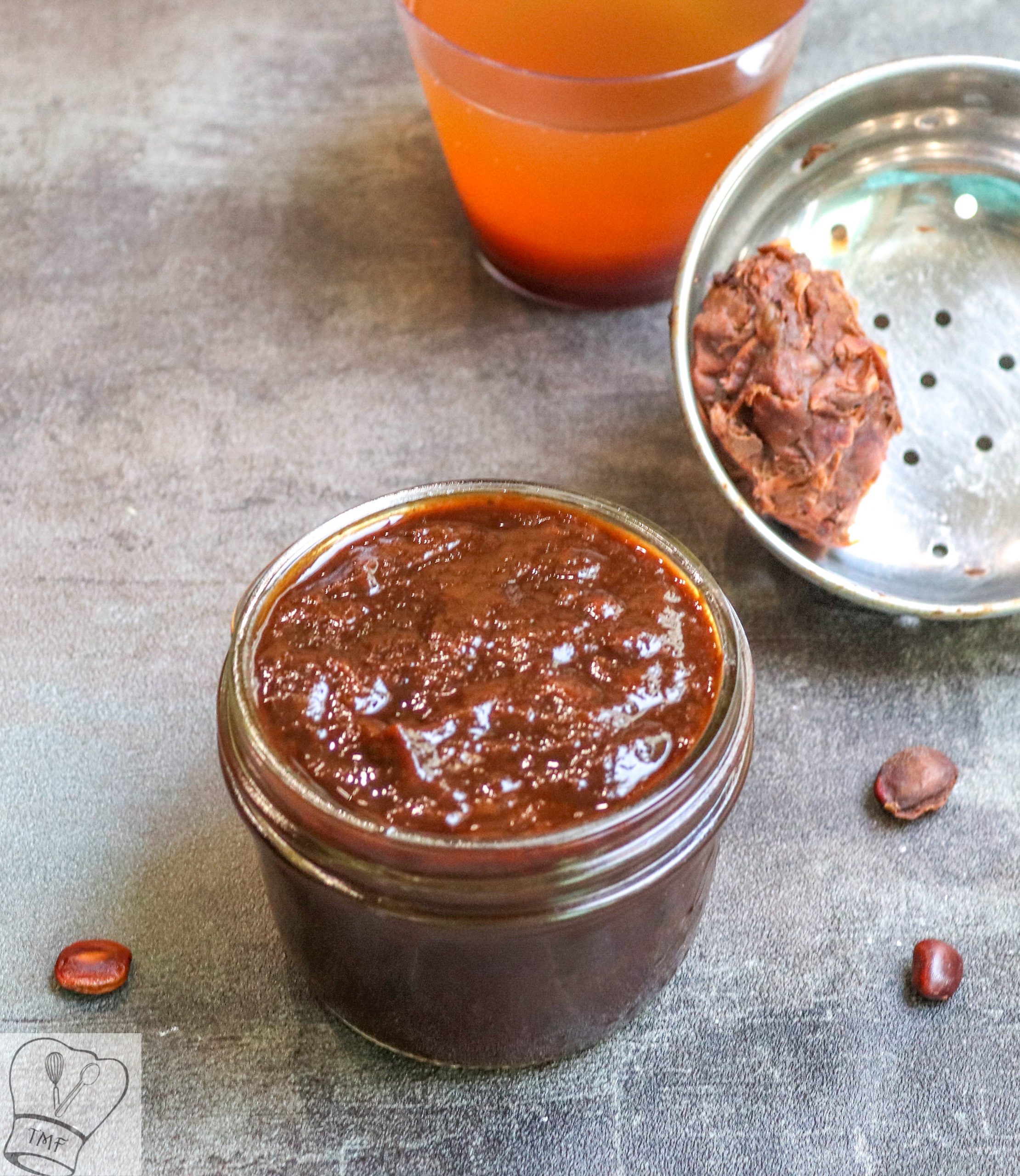
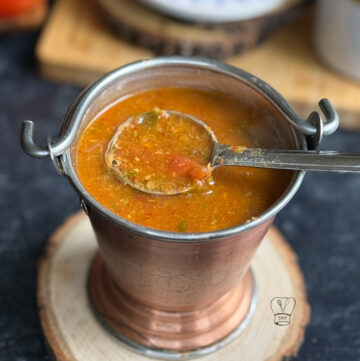
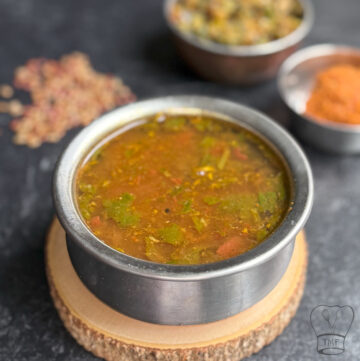
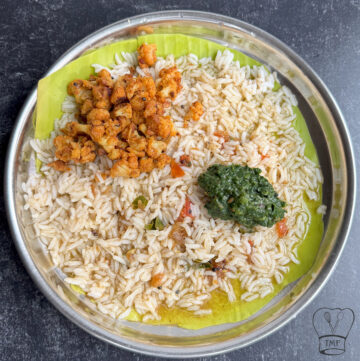
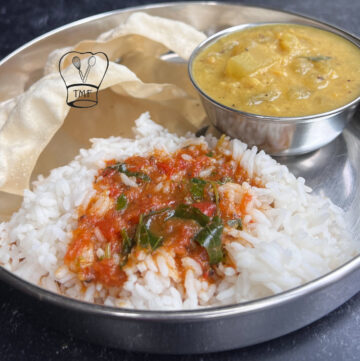
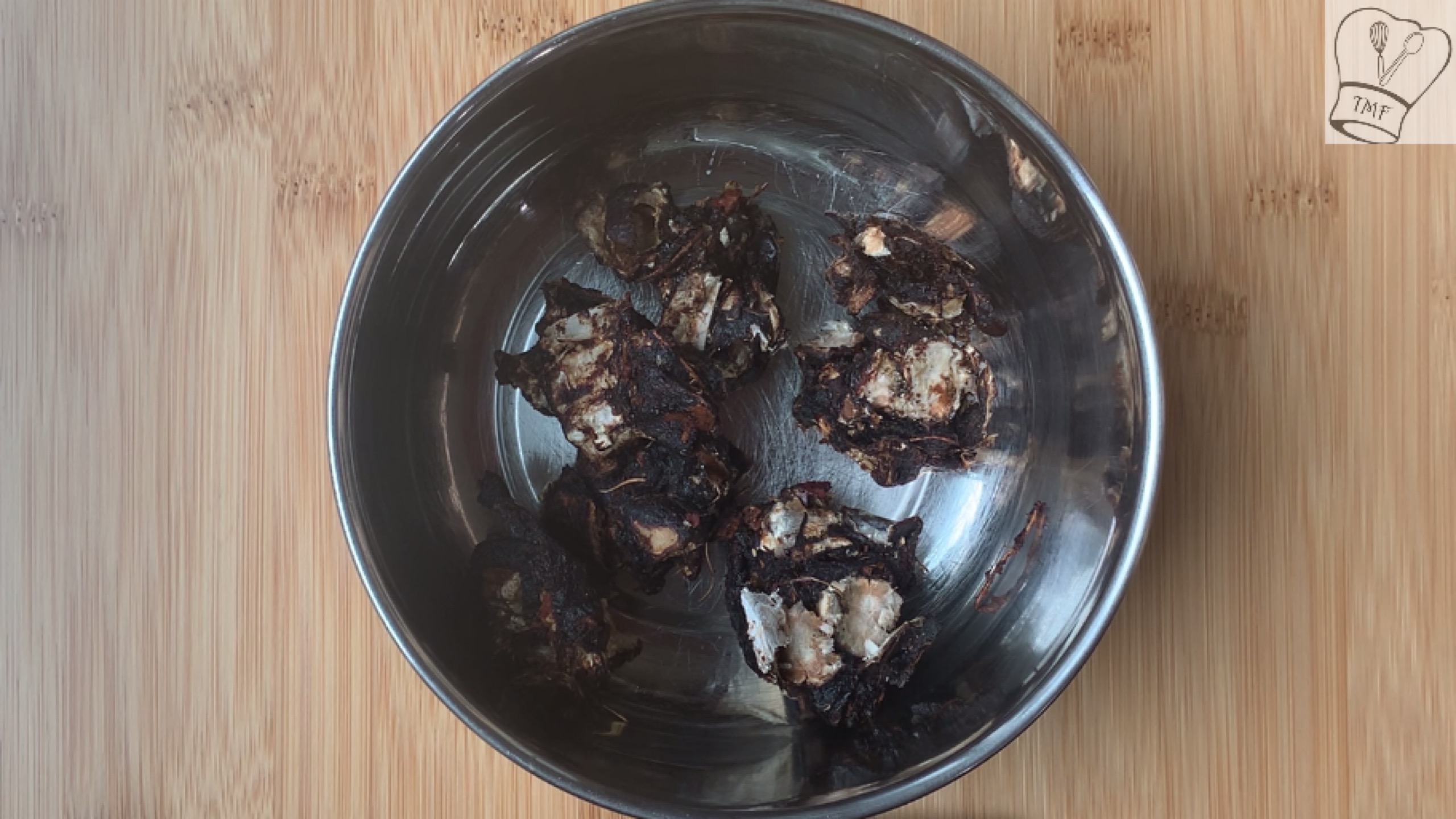
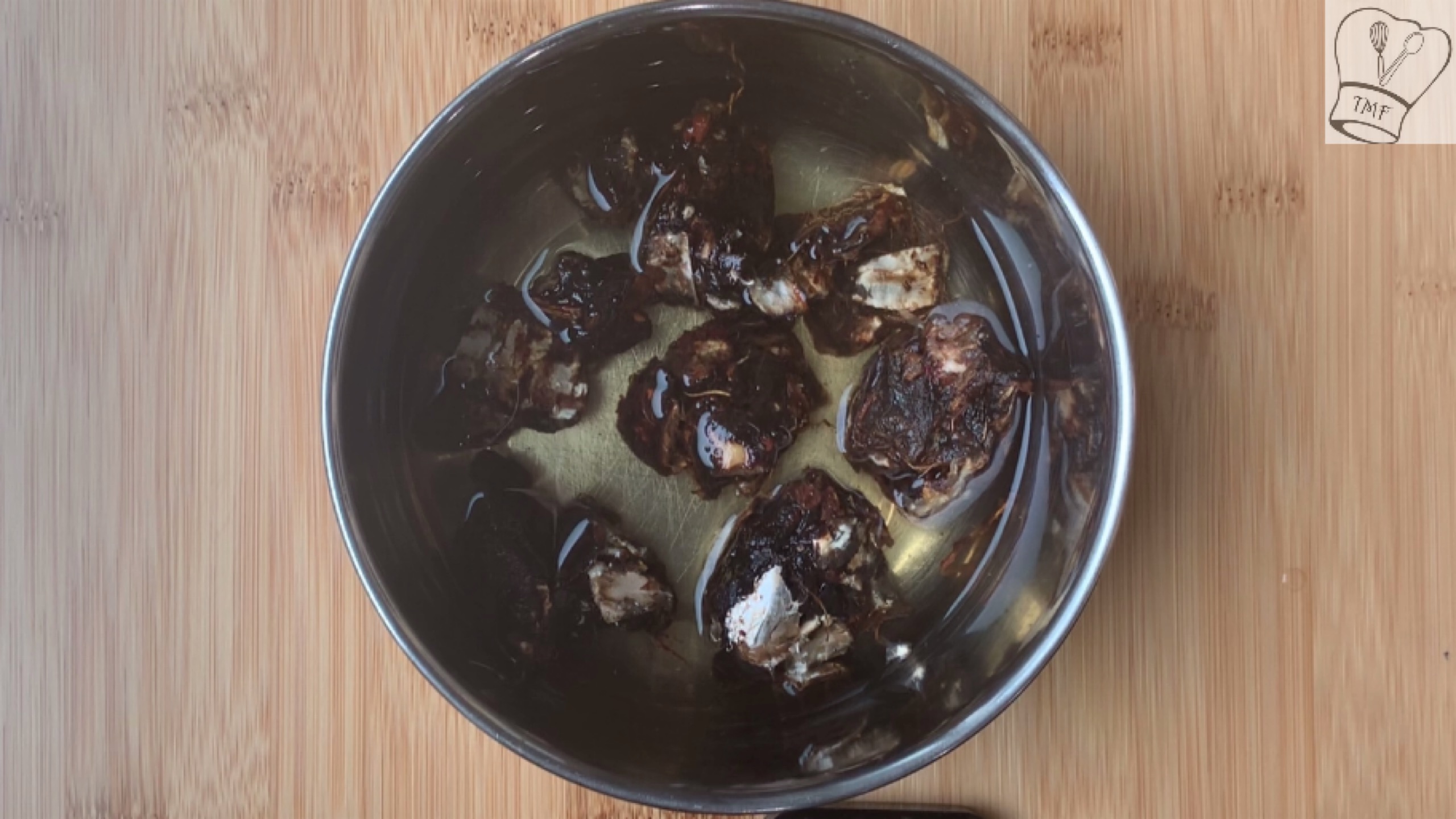
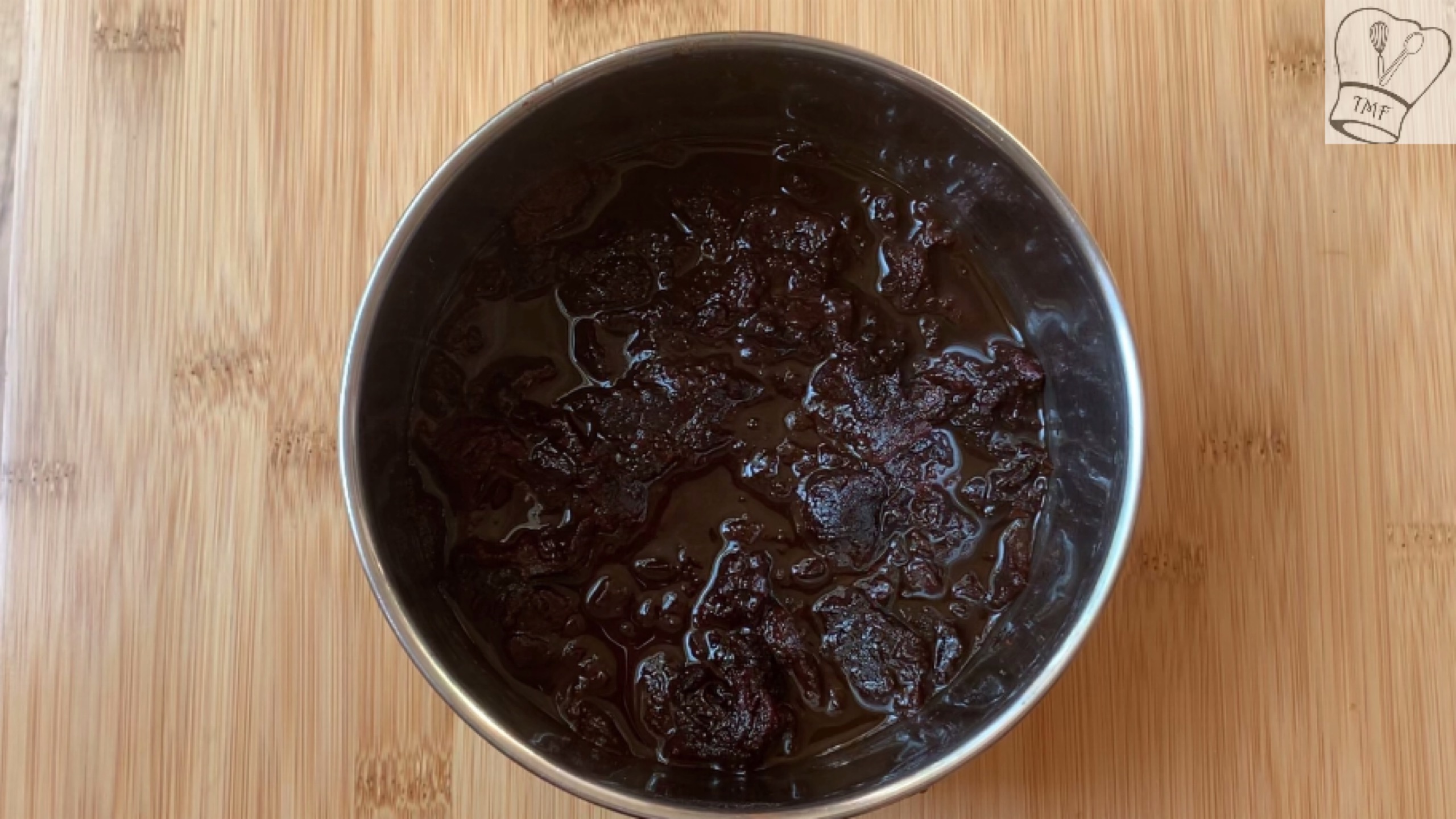
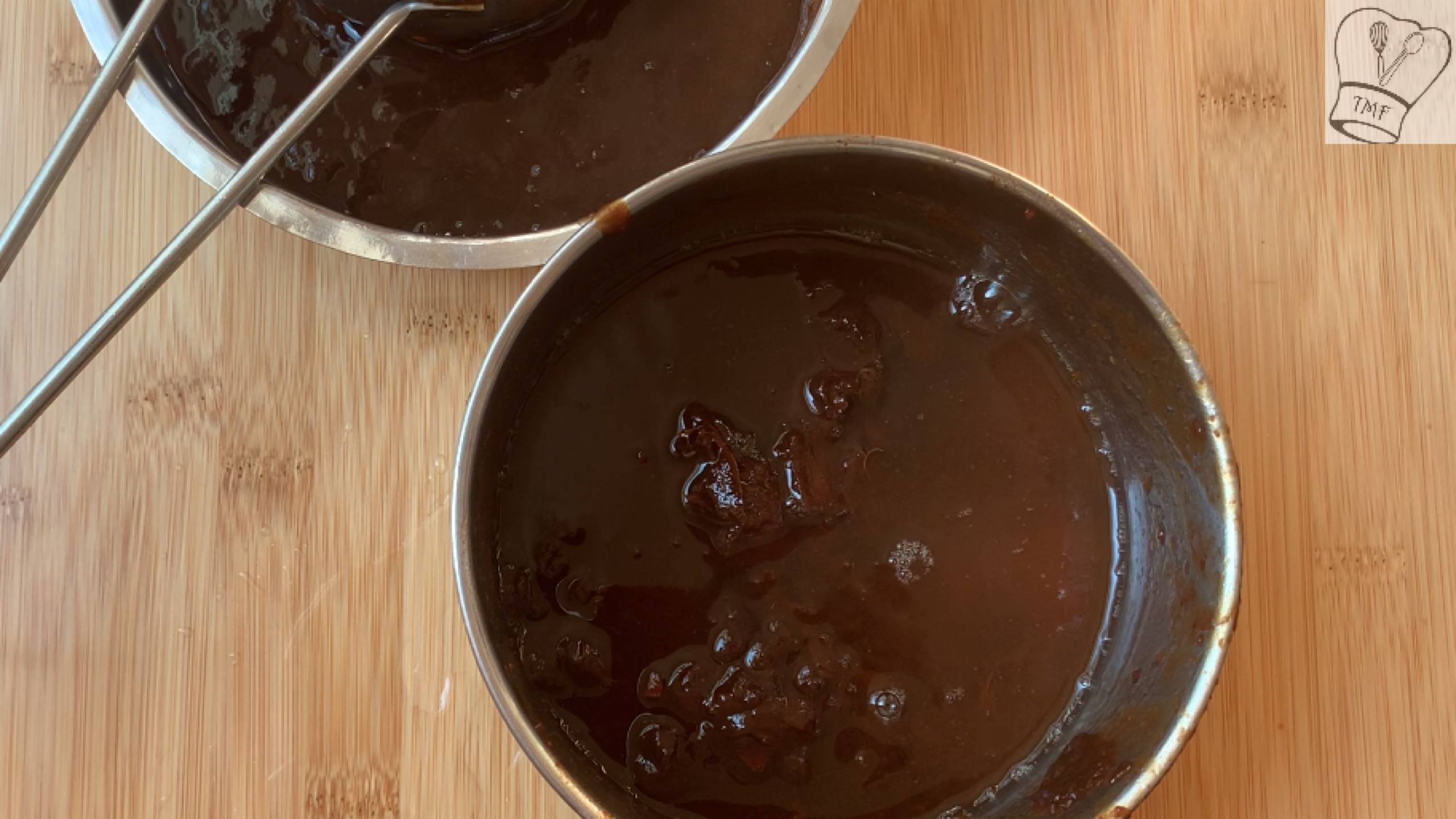
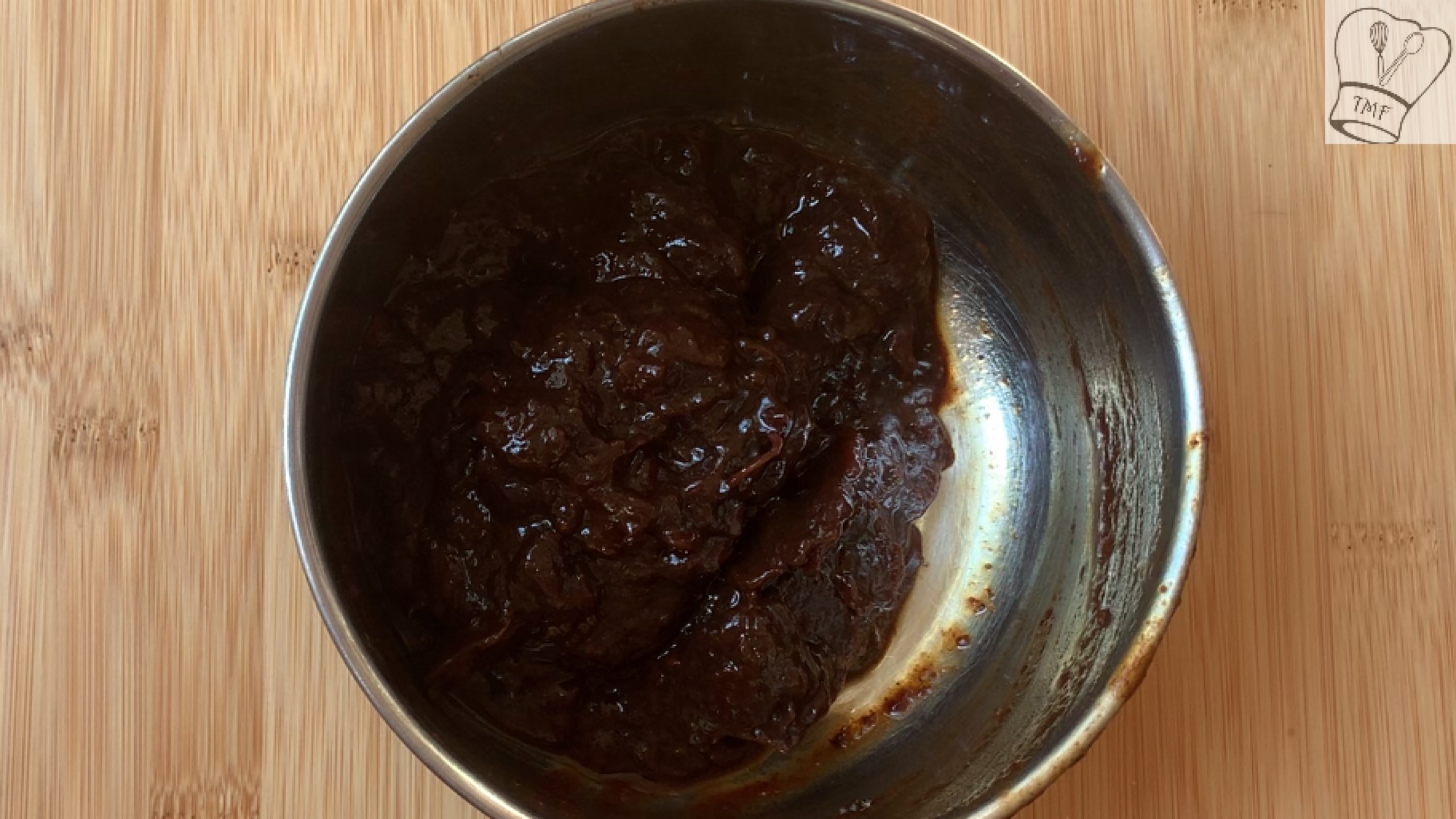
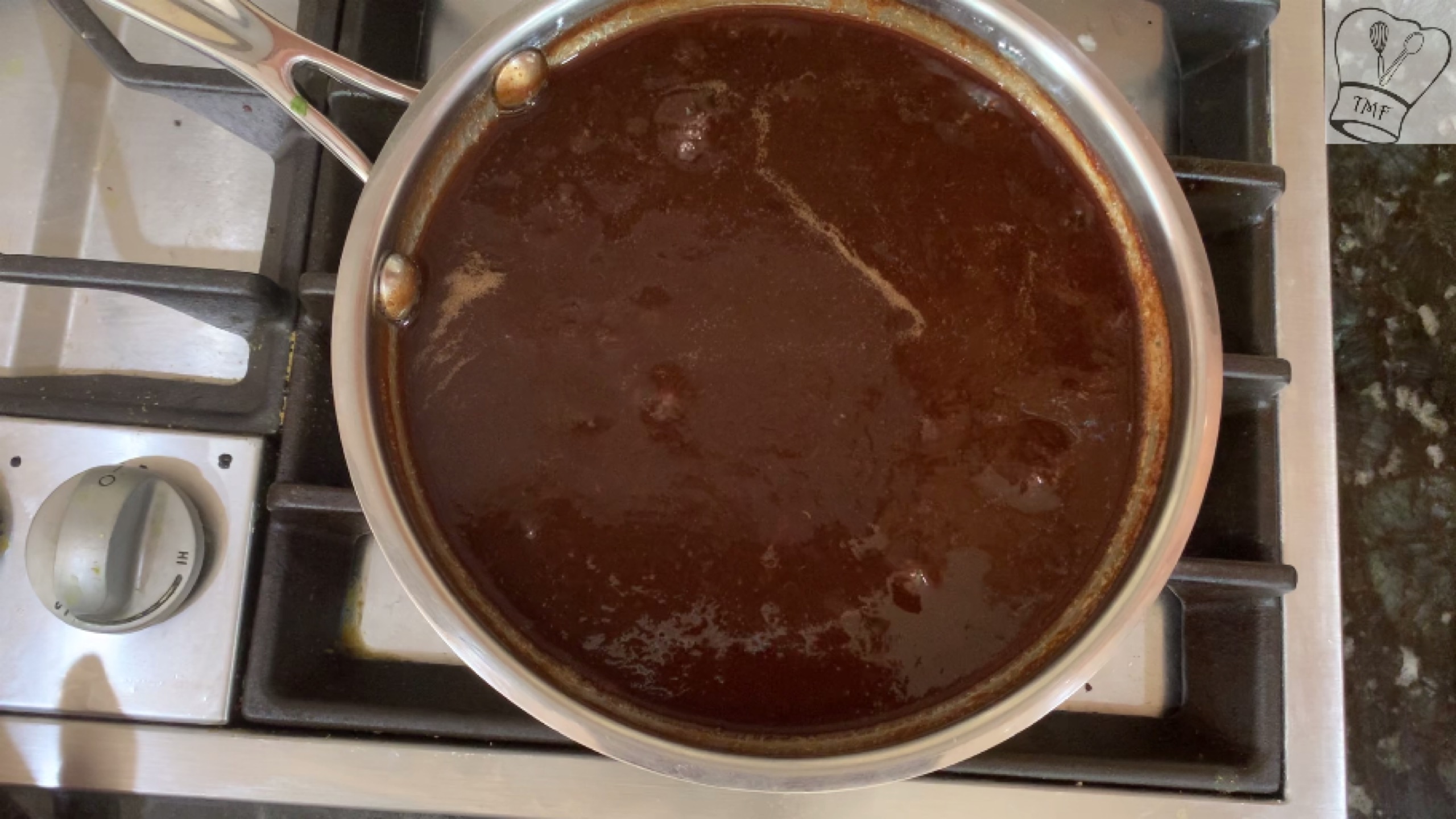
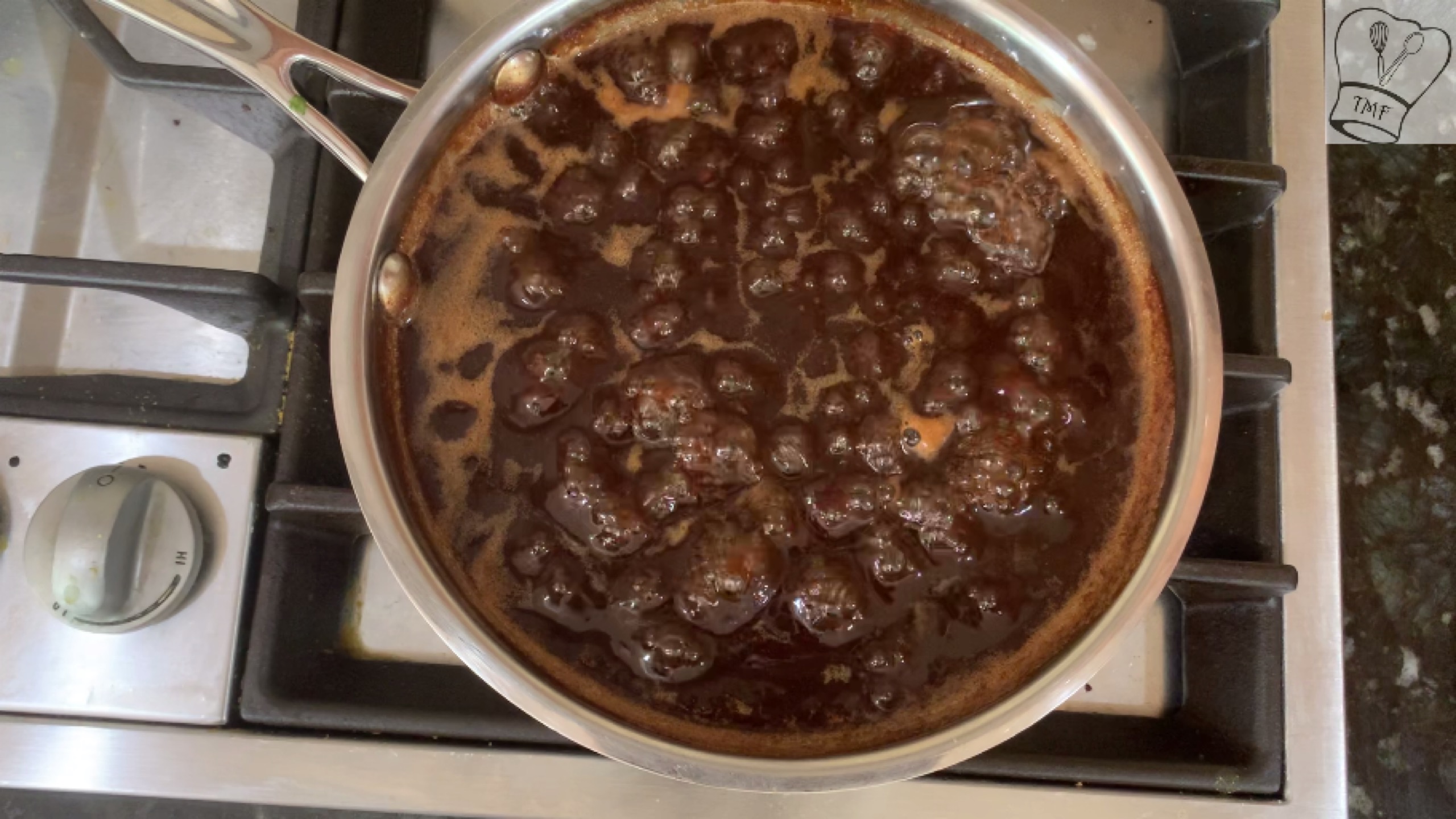

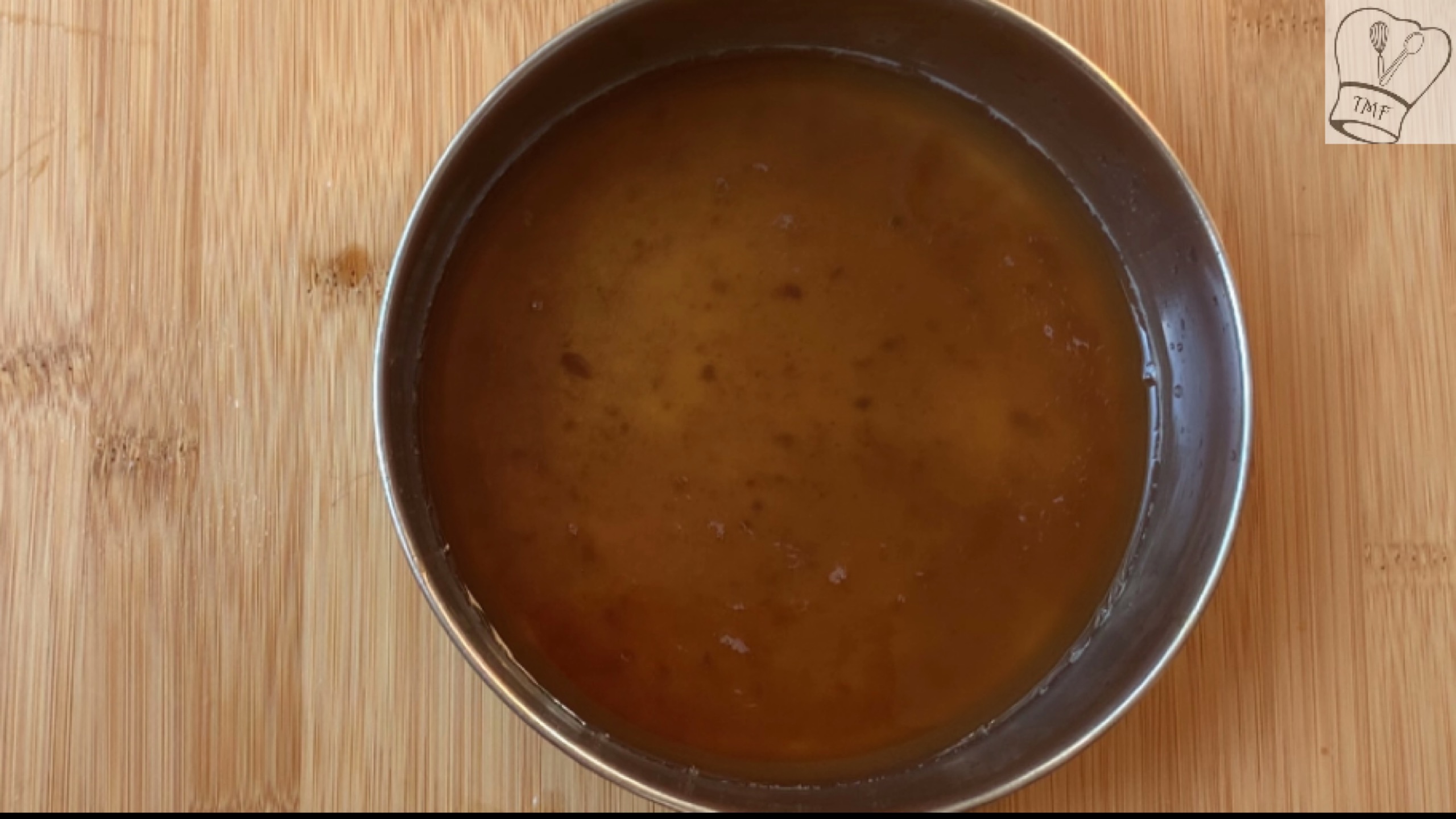
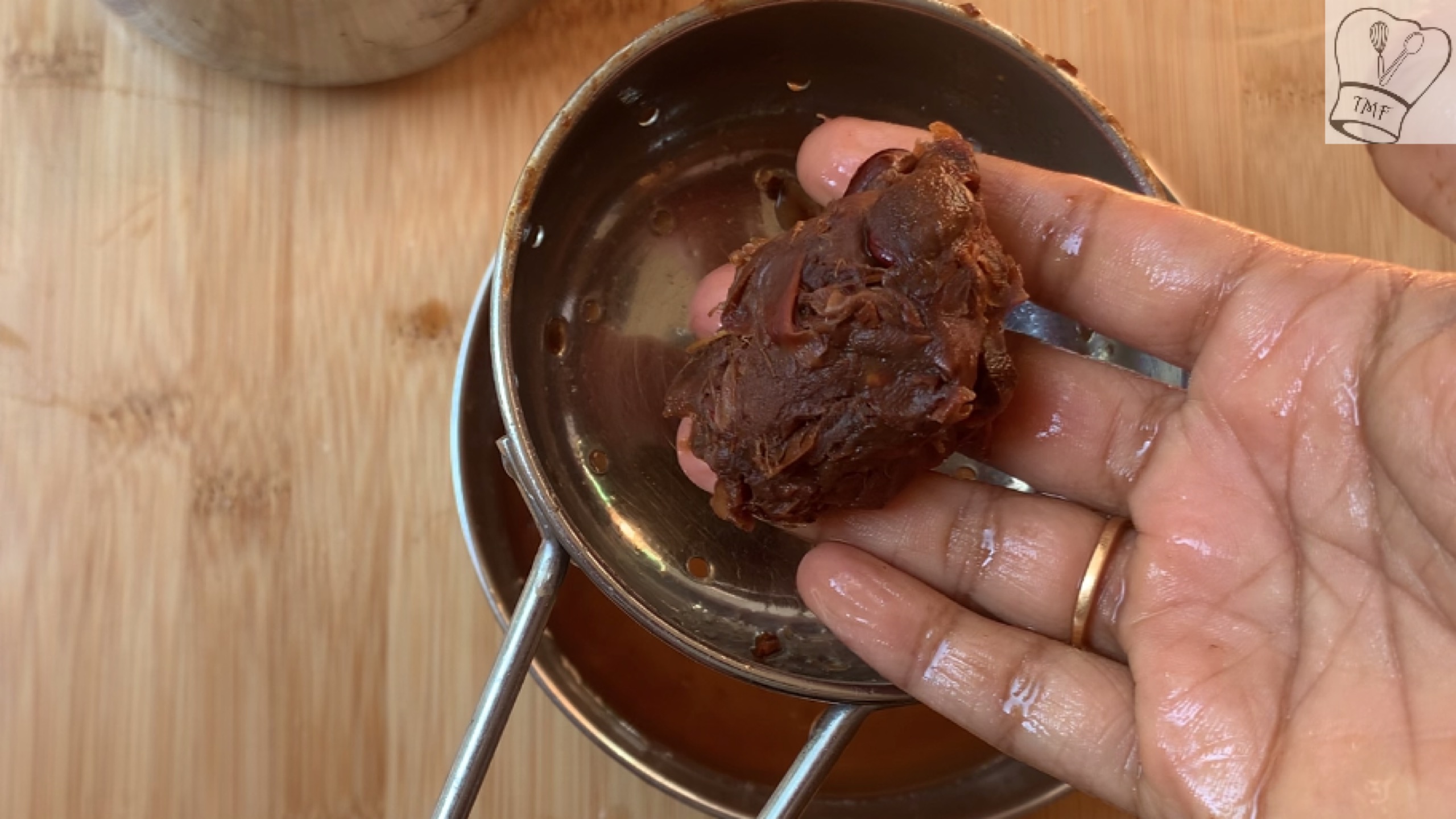
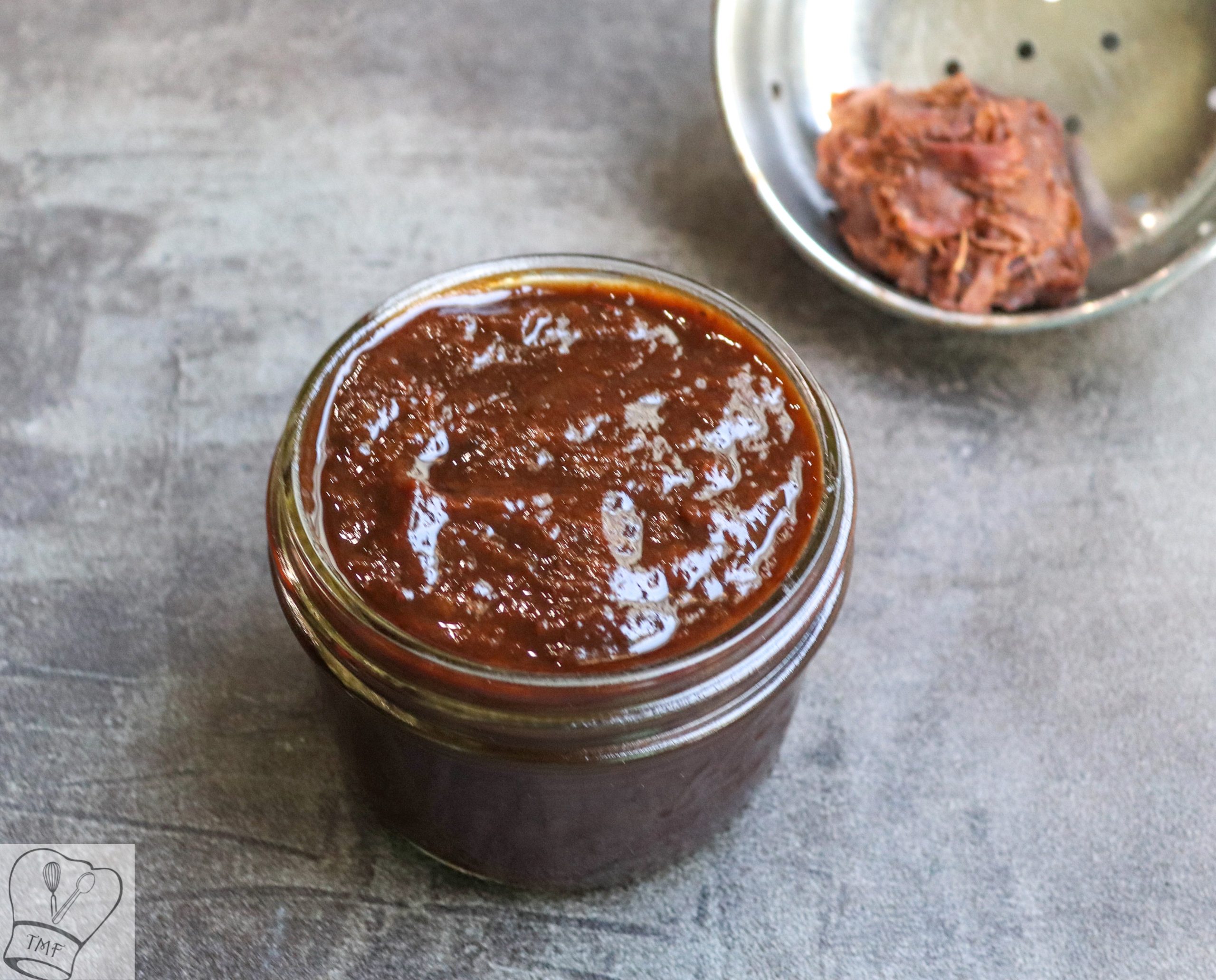
Leave a Reply